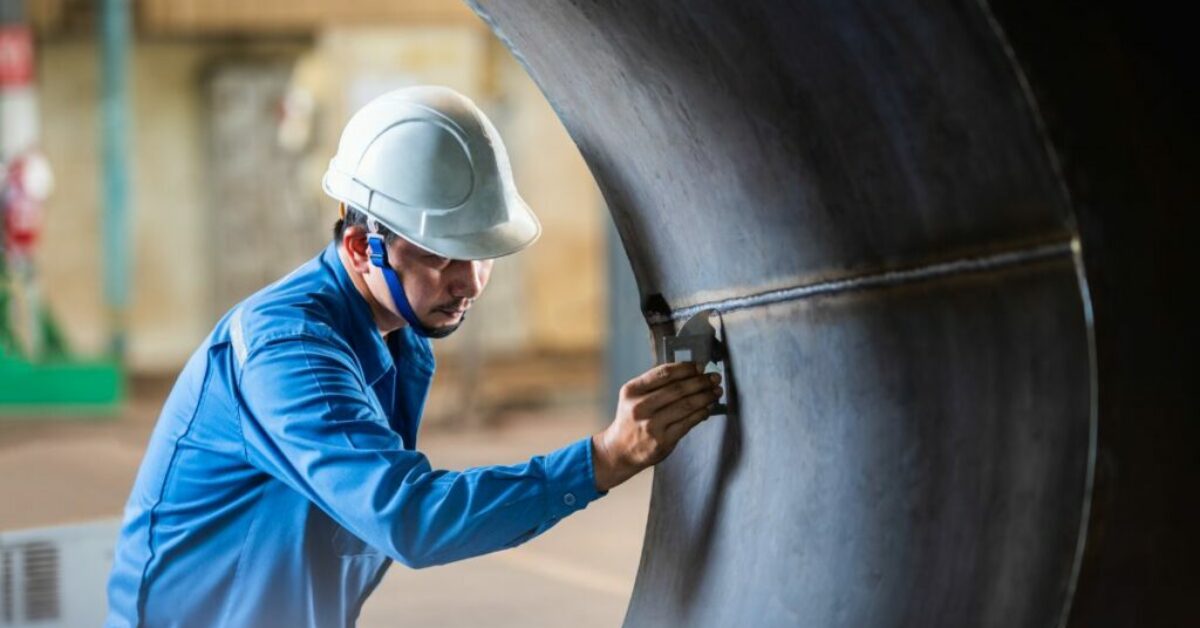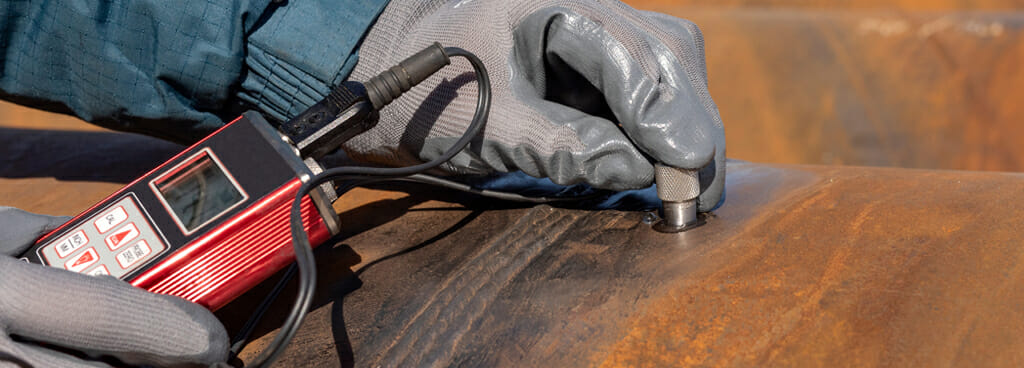Understanding the Value of Welding Inspection in Ensuring Structural Stability
Welding assessment plays a pivotal function in keeping architectural integrity within the building sector, serving as a crucial secure versus possible failings. By systematically identifying typical defects-- such as porosity and insufficient combination-- inspections not only promote quality standards yet likewise guarantee compliance with safety guidelines.
Role of Welding in Construction

Along with structural applications, welding is indispensable in the manufacture of both large-scale and detailed parts. It enables for the modification of components, enabling designers and architects to bring their layouts to fruition. The convenience of welding methods, consisting of MIG, TIG, and arc welding, enables the reliable signing up with of different materials and densities, accommodating particular project needs.
Furthermore, the innovation of welding innovations has actually resulted in improved effectiveness and accuracy in construction processes. Automated welding systems boost productivity while reducing human error, thus advertising better results. The duty of welding in construction prolongs beyond plain assembly; it is an important factor in ensuring the safety, durability, and general honesty of frameworks, emphasizing its importance in the modern building and construction landscape.
Common Welding Defects
The stability of welded frameworks is dramatically affected by the presence of problems that can jeopardize their performance and safety. Typical welding issues include porosity, incomplete fusion, damaging, and slag additions, each of which can drastically impact the total toughness and resilience of welded joints.
Porosity happens when gas bubbles are entraped in the weld metal, causing decreased tensile strength. Insufficient combination occurs when the weld metal does not effectively bond with the base metal, leading to weak joints prone to failure. Undercutting, a groove that forms beside the weld, can lower the efficient cross-sectional area, increasing the risk of fracture. Slag additions happen when non-metallic materials come to be entraped in the weld, resulting in stress and anxiety focus factors that may start fractures.
Other defects, such as excessive spatter and misalignment, can additionally contribute to structural weak points. Recognizing and addressing these issues during the welding process is essential to make sure the reliability of the last structure. Awareness of these typical welding flaws is essential for examiners and designers to keep the honesty of welded frameworks and make certain lasting security and performance.
Benefits of Welding Examination
Guaranteeing the integrity of welded structures depends greatly on the efficiency of welding examination processes. The primary advantage of welding assessment is the early discovery of potential problems, which can considerably lower the risk of tragic failings. By identifying concerns such as fractures, incomplete fusion, or porosity prior to they rise, assessment procedures aid keep the security and dependability of structures.
Moreover, welding inspection improves conformity with industry requirements and laws. Following these needs is critical for ensuring and avoiding lawful consequences that jobs fulfill necessary safety and security procedures. This conformity also cultivates a culture of quality control, promoting finest techniques amongst welding employees.
In addition, regular examination can result in set you back financial savings in time. By reducing the chance of rework or repair work as a result check my reference of welding issues, companies can allot sources more successfully, ultimately improving efficiency.

Examination Methods and Criteria
Efficient examination methods and criteria are important elements of maintaining the stability of bonded structures. Common inspection strategies consist of visual inspection, ultrasonic testing, radiographic screening, and magnetic fragment screening.
Aesthetic examination is typically the primary step, permitting inspectors to identify surface area problems such as cracks or incorrect bead shapes. Ultrasonic testing utilizes high-frequency acoustic waves to find internal imperfections, while radiographic testing uses X-rays or gamma rays to reveal covert disparities within the weld. Magnetic bit testing is efficient for finding surface area and near-surface flaws in ferromagnetic products.
Specifications play a vital duty in leading these evaluation processes, with companies such as the American Welding Culture (AWS) and the International Company for Standardization (ISO) supplying comprehensive standards. Conformity with these standards not just guarantees the top quality of welds however likewise fosters trust fund among stakeholders in the structural honesty of the finished item. Abiding by established evaluation techniques and requirements is fundamental to achieving long-lasting and reliable welded frameworks.
Regulatory Conformity and Safety
Governing compliance is important for safeguarding the safety and security and stability of welded frameworks. Abiding by well-known codes and requirements, such as those set by the American Welding Society (AWS) and the American National Criteria Institute (ANSI), ensures that welding practices satisfy stringent security and top quality needs. These laws are created to stop failings that might bring about tragic incidents, injuries, or loss of life.
Compliance with these regulations involves regular evaluations and analyses go to website throughout the welding procedure. Qualified assessors assess welds for strength, top quality, and adherence to specifications, making certain that any type of discrepancies are without delay attended to. This aggressive approach not just enhances the architectural stability of bonded elements however likewise mitigates dangers related to non-compliance.
In addition, regulatory bodies often require paperwork of examinations and compliance records, which work as lawful evidence of adherence to safety requirements. Business that focus on regulative conformity not just protect their labor force and customers yet also improve their online reputation within the industry. Ultimately, understanding and carrying out these laws is critical for any organization intending to keep high security standards and accomplish long-lasting operational success in welding methods.
Verdict
To conclude, welding evaluation plays a vital role in keeping architectural honesty within the construction sector. By determining common issues such as porosity and insufficient combination, evaluations help with early treatment, promoting quality control and conformity with market requirements. The implementation of numerous inspection techniques not just improves safety yet additionally contributes to the total sustainability and reputation of building and construction practices. Eventually, a commitment to extensive welding evaluation is crucial for guarding both the labor force and the integrity of created structures.
The flexibility of welding methods, including MIG, TIG, and arc welding, permits for the efficient signing up with of different materials and thicknesses, catering to certain job requirements.
Making certain the stability of welded structures depends heavily on the efficiency of welding assessment procedures (Welding Inspection Milwaukee). In recap, the benefits of welding inspection are complex, crucial for ensuring Discover More architectural stability and functional excellence

Sticking to well established codes and criteria, such as those set by the American Welding Society (AWS) and the American National Requirement Institute (ANSI), guarantees that welding methods meet strict security and top quality requirements. Eventually, a dedication to extensive welding inspection is vital for protecting both the workforce and the stability of built frameworks.